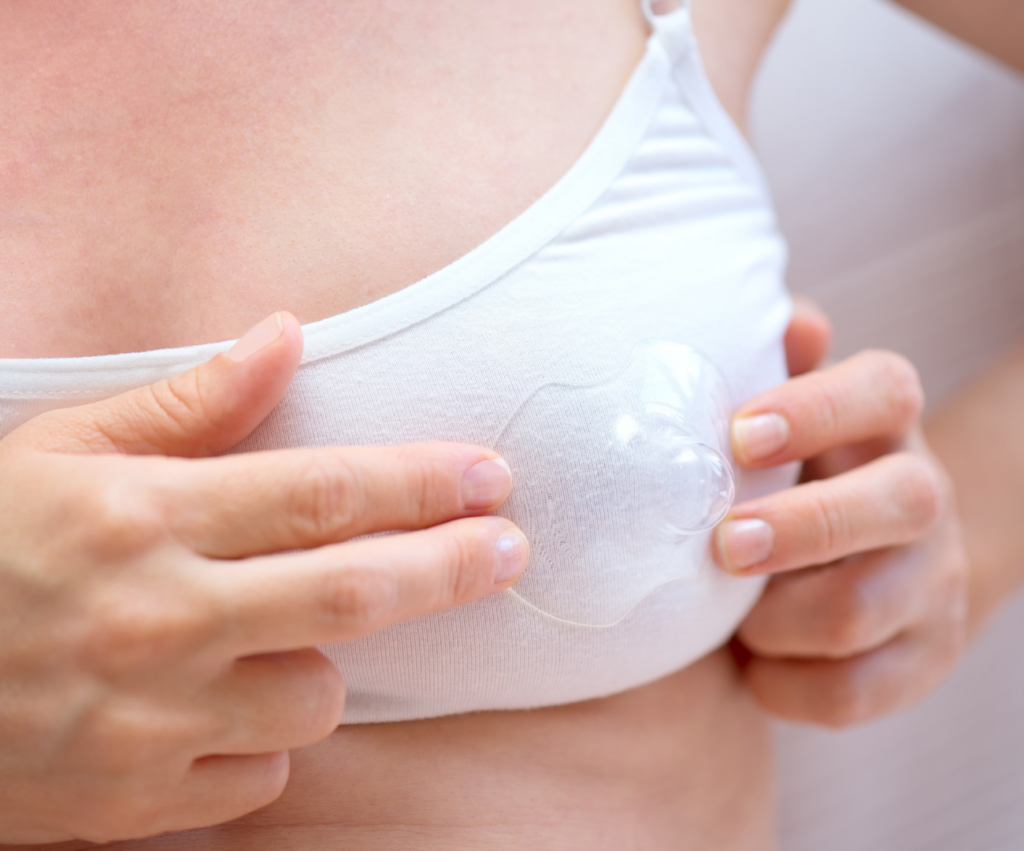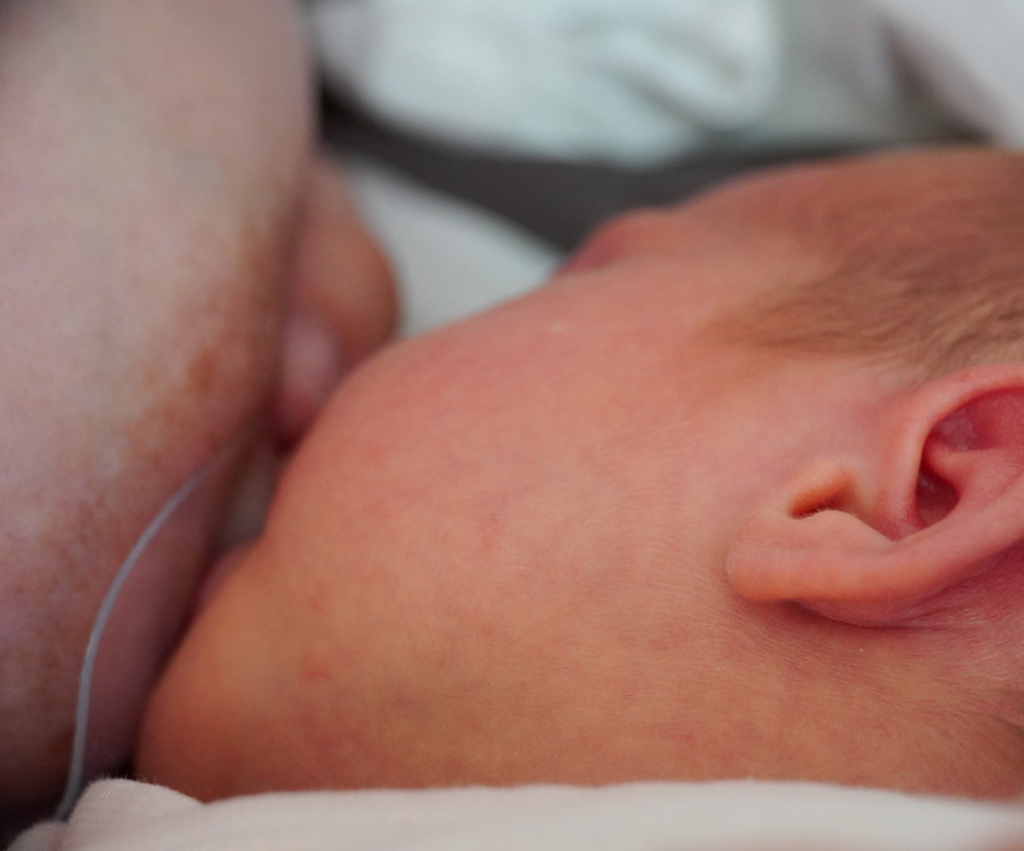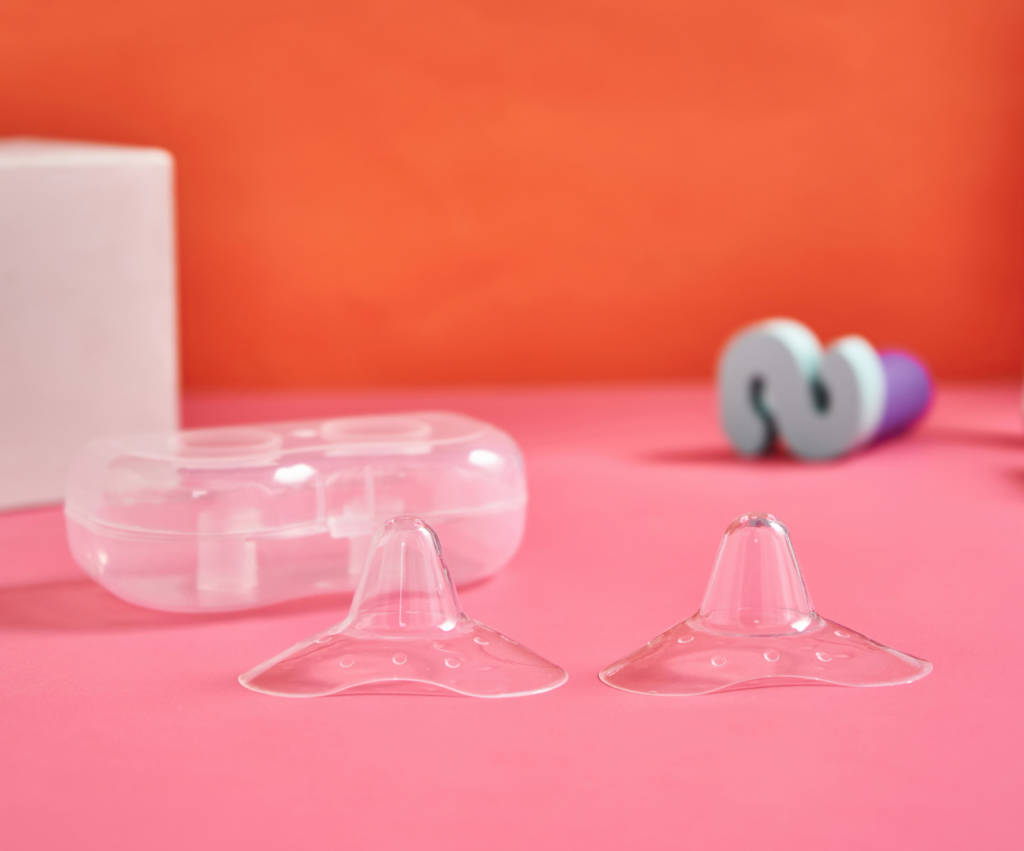If you’ve been using a nipple shield to help feed your baby, you’ve likely encountered common frustrations and wondered how to help your baby wean from the shield.
You’ve probably noticed how labor-intensive using a nipple shield can be. You have to apply the shield, the baby knocks it off the breast, and you have to clean it, and this cycle repeats itself every feeding.
So, keep reading if you’re ready to wean your baby from the nipple shield.

Eight tips to help you wean from a nipple shield
Often, using a nipple shield means there is a root cause as to why it was used; remember that weaning your baby from a nipple shield can be a gradual process that requires patience and consistency.
1. Consult with a lactation consultant (IBCLC)
It’s essential to seek guidance from a lactation consultant to help determine how the nipple shield is helping your baby. A baby with difficulty latching may often have unexamined oral ties or jaw tension or may need support with specific sucking and coordination skills.
An IBCLC can assess the situation and provide personalized referrals for your baby to help build specific skills to help your baby feed without the nipple shield.
2. Observe your baby’s feeding pattern
As you continue to monitor your baby’s feeding behavior, you can look for readiness to wean off the nipple shield.
Signs of readiness may include:
- Increased suction at the breast
- Improved milk transfer during weighted feedings
- Comfortable feedings with no pain or compressions from a shallow latch
3. Offer “no pressure” breastfeeds
Since babies use nipple shields to help them feed, they often are used to sucking a certain way at the breast.
To transition them, we can start by offering your baby some feeding time without the nipple shield at the beginning of the feeding. At the beginning of feeding, your baby has more energy for coordinating sucking skills, and your breasts are full of milk.
Experiment with having your baby lay skin-to-skin to help stimulate your baby’s natural feeding instincts. You can try this during calm and relaxed moments when your baby is less hungry; just be sure not to put too much “pressure” on these feeding times, as your baby is still practicing and learning.
4. Gradually decrease nipple shield use
Once you have started introducing the baby to latching without the shield, you can gradually increase the amount of time that your baby practices latching without the shield.
Start by using the nipple shield for the initial part of the feeding, and then try removing it once your baby is latched and actively nursing. You can gradually decrease the time you use the nipple shield until you no longer rely on it.

5. Hand express or pump some breast milk
Before offering a bare breastfeed, express a small amount of breast milk onto your nipple to entice your baby to latch. Since babies latch using their reflexes and sense (primarily the sense of smell!), this can help your baby become more comfortable with latching without the shield.
6. Experiment with different breastfeeding positions
Often, changing positions may facilitate a better latch which can decrease the reliance on your baby’s use of the nipple shield. Common breastfeeding positions include: cross cradle, cradle, laid back or reclined position, football hold, and koala hold.
Baby, Lifestyle, Must-Reads Bye-Bye Stains: The Best Non-Toxic Stain Removers for Baby Poop and Beyond
7. Connect with your village
Weaning from a nipple shield can be challenging, and sometimes it’s normal to feel frustrated or discouraged. Reaching out to support groups, online forums, or other breastfeeding mothers who have successfully weaned off nipple shields can provide support.
Remember that seeking this support alongside your consultations with an IBCLC is essential because the root cause of an infant’s difficulty weaning off a nipple shield varies for each baby.
8. Check in with yourself
Often, mothers feel pressure to wean from the nipple shield (often coming from within or from others). While it can be inconvenient to use at every feeding, remember that your baby uses the shield as a tool while they work on their breastfeeding skills.
Since feeding is a relationship and stress and tension can impact milk letdown, checking in with yourself and noticing if you need to give yourself and your baby more breaks can be helpful.

Final thoughts on weaning from a nipple shield
Weaning off a nipple shield can take time and practice as your baby works on new feeding skills. Be patient with yourself and your baby as you adjust to the change.
Celebrate small victories along the way, even if progress seems slow. Remember, each baby is unique, and the nipple shield weaning process may vary based on every baby’s skill and ability.
Monitoring your baby’s weight gain and diaper output alongside a lactation consultant ensures overall well-being during the transition. If you need a lactation consultant in your area, you can find an in-home or office IBCLC via The Lactation Network.
